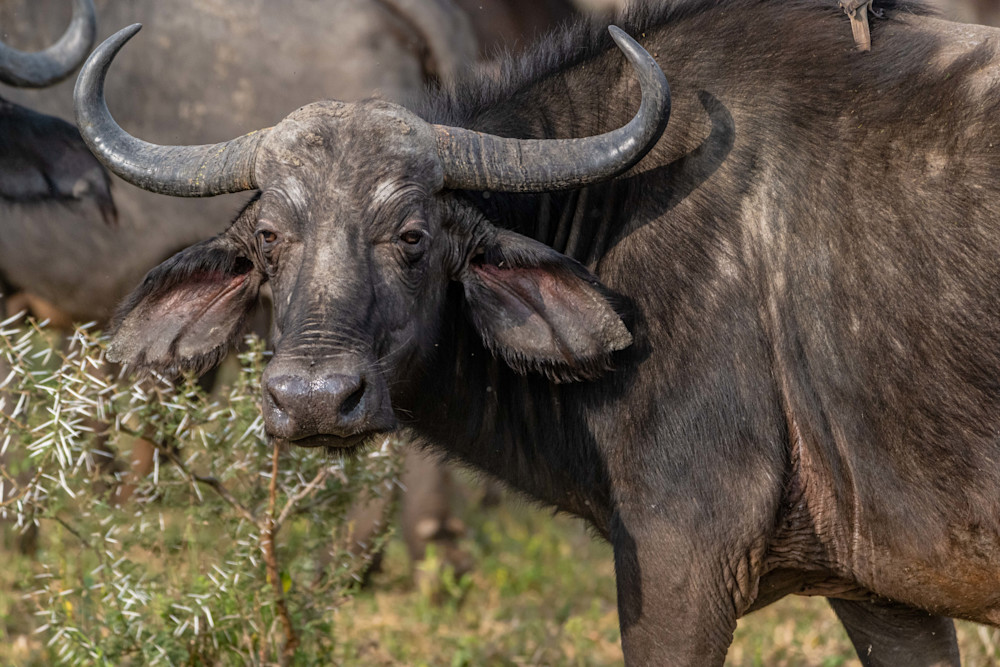Water buffalo (Bubalus bubalis) is a large ungulate that is native to Asia, but it has been introduced to various parts of the world, including Africa and Europe. Here are some key characteristics and information about water buffalo:
**1. Physical Characteristics:**
- Size: Water buffalo are large animals, and their size can vary depending on the specific breed and region. Adults typically stand about 1.5 to 1.9 meters (4.9 to 6.2 feet) tall at the shoulder.
- Weight: Adult water buffalo can weigh between 600 and 1,200 kilograms (1,300 to 2,600 pounds).
- Color: Their coat color can range from gray and dark brown to black. Some individuals may have lighter markings.
**2. Horns:**
- Water buffalo have distinct, long, and curved horns that can span up to 2 meters (6.6 feet) or more. The horns have a backward curve and are used for defense against predators and in intra-species interactions.
**3. Habitat:**
- While native to Asia, water buffalo have been introduced to various regions and can thrive in a range of habitats. They are often associated with wetlands, marshes, and rivers, where they can cool off and wallow in mud.
**4. Behavior:**
- Water buffalo are social animals and are known to form herds. These herds are often led by a dominant male.
- They are excellent swimmers and are comfortable in aquatic environments. Water buffalo will often submerge themselves in water or mud to regulate body temperature and reduce the irritation caused by biting insects.
**5. Domestication:**
- Water buffalo have been domesticated for thousands of years. Domestic water buffalo are important in agriculture, particularly in parts of Asia, where they are used for plowing fields and as a source of milk, meat, and hides.
**6. Agricultural Use:**
- In agriculture, water buffalo are used as draft animals for plowing rice paddies and other tasks. Their ability to work in wet and muddy conditions makes them well-suited for certain agricultural practices.
**7. Conservation Status:**
- While domestic water buffalo are widespread and abundant, the wild water buffalo (Bubalus arnee) is listed as endangered. Conservation efforts are in place to protect and preserve the remaining wild populations.
**8. Global Distribution:**
- Domestic water buffalo are found in many parts of Asia, including India, China, Indonesia, and the Philippines. They have also been introduced to Africa, Europe, and other regions for agricultural purposes.
**9. Water Buffalo in Africa:**
- In Africa, water buffalo have been introduced to countries such as Mozambique, Kenya, and Zambia. They may have ecological impacts, especially in wetland areas.
It's important to note that the term "water buffalo" is sometimes used broadly and can refer to both domesticated and wild species. Domestic water buffalo have been selectively bred for specific traits, leading to different breeds adapted to various purposes, such as meat or milk production.
















